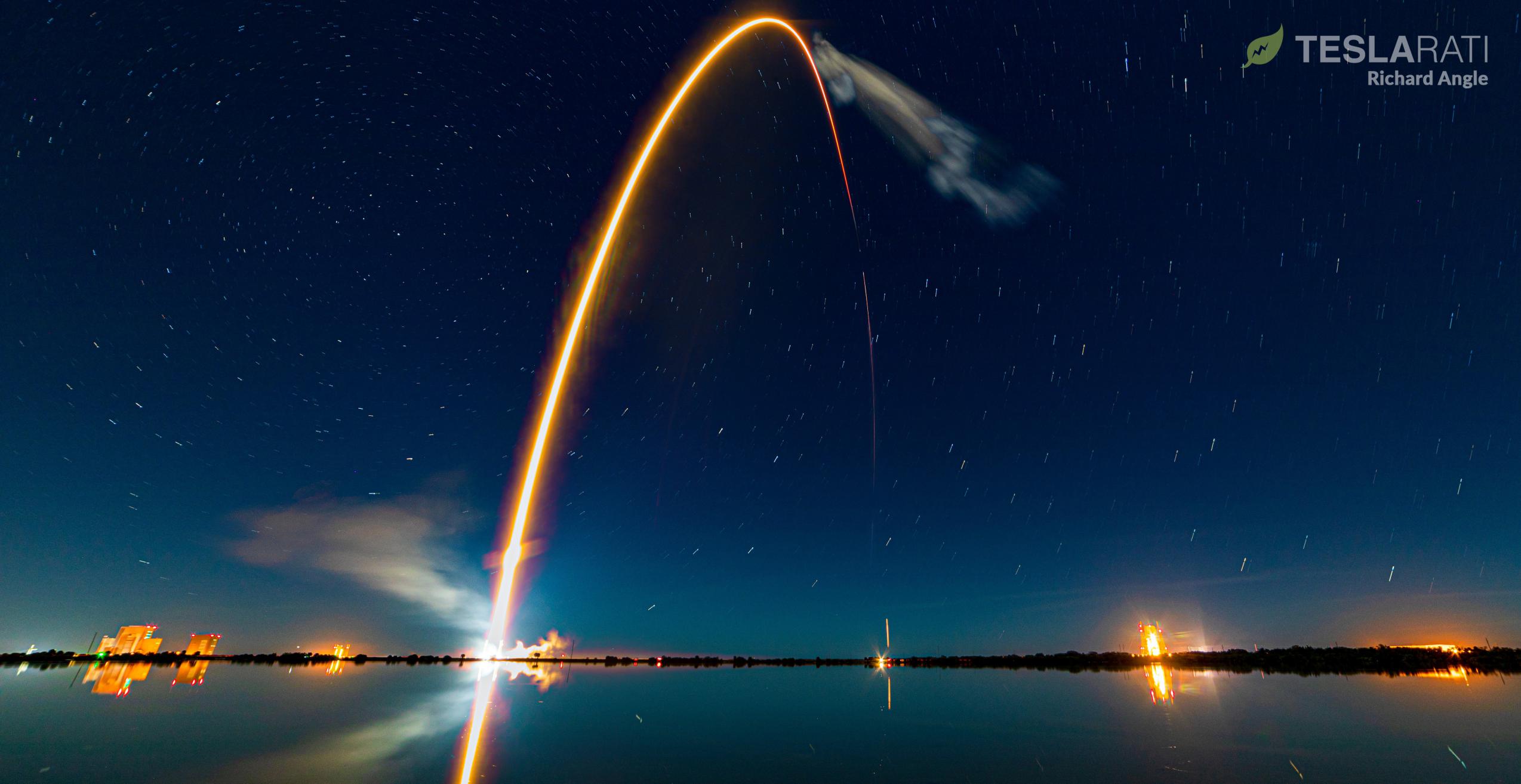
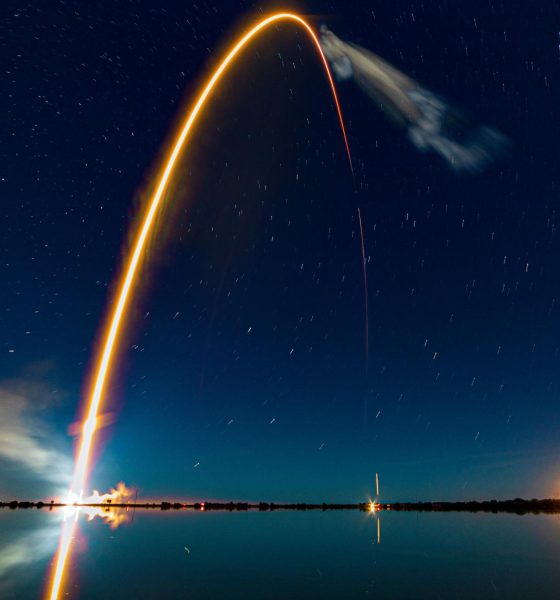
News
[Update] SpaceX rocket launch kicks off a potentially record-smashing year for Falcon 9
Update: After spinning itself around its vertical axis a bit like a propeller, SpaceX’s expendable Falcon 9 upper stage has successfully released a massive stack of 60 Starlink v1.0 satellites for the second time in two months. Designing to tolerate the occasional bump during their bizarre deployment, those 60 satellites will quickly spread out in space and deploy their solar arrays an hour or so after separating from Falcon 9’s upper stage.
Perhaps as early as later this evening or sometime on January 7th, all 60 satellites will fire up their krypton ion thrusters, beginning the process of temporarily raising their orbits to 350 km (220 mi). Once there, SpaceX will more extensively verify the health of each spacecraft and – if all looks well – send all 60 on their way to a final circular 550 km (340 km) orbit where they will join their brethren and begin operating as communications satellites.
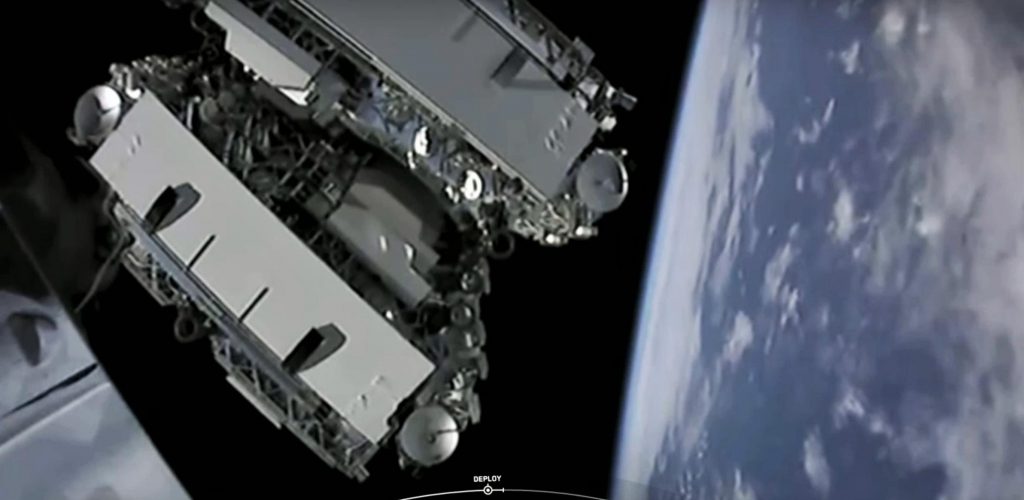
A SpaceX Falcon 9 has kicked off what could be a record-smashing year, potentially making SpaceX the world’s most prolific launch company thanks in large part to the game-changing reusability of its Falcon rockets.
At 9:19 pm ET on January 6th (02:19 UTC, Jan 7), Falcon 9 booster B1049’s nine Merlin 1D engines came to lift, lifting the two-stage rocket and its payload of 60 Starlink satellites off the pad and sending them on their way to orbit. Minutes later, the Falcon 9 booster shut off – completing its fourth successful launch in 17 months – and flipped around with small cold-gas thrusters, beginning its trip back down to Earth.
Less than nine minutes after lifting off from SpaceX’s LC-40 pad at Cape Canaveral Air Force Station (CCAFS), Falcon 9 B1049 began its landing burn and gently touched down on drone ship Of Course I Still Love You (OCISLY), stationed more than 600 km (375 mi) downrange in the Atlantic Ocean. Seconds later, the mission’s expendable Falcon 9 upper stage shut off its Merlin Vacuum (MVac) engine, completing the first of two burns and placing the rocket and its Starlink payload in a parking orbit.
Known as Starlink V1 L2, referring to the second launch of Starlink v1.0 satellites, this mission crossed off several SpaceX milestones – both internal and external. For Falcon 9, it marked the company’s 48th successful landing of an orbital-class rocket booster, as well as the second time SpaceX has successfully launched and landed the same booster (this time B1049) four times in a row.
Even more significantly, it’s almost certain that – so long as all 60 Starlink V1 L2 satellites successfully deploy and begin orbit-raising – SpaceX will have become the owner and operator of the world’s largest commercial satellite constellation. After tonight’s launch, SpaceX’s Starlink internet constellation will likely measure some 175 operational satellites strong less than eight months after the company began dedicated internal launches.
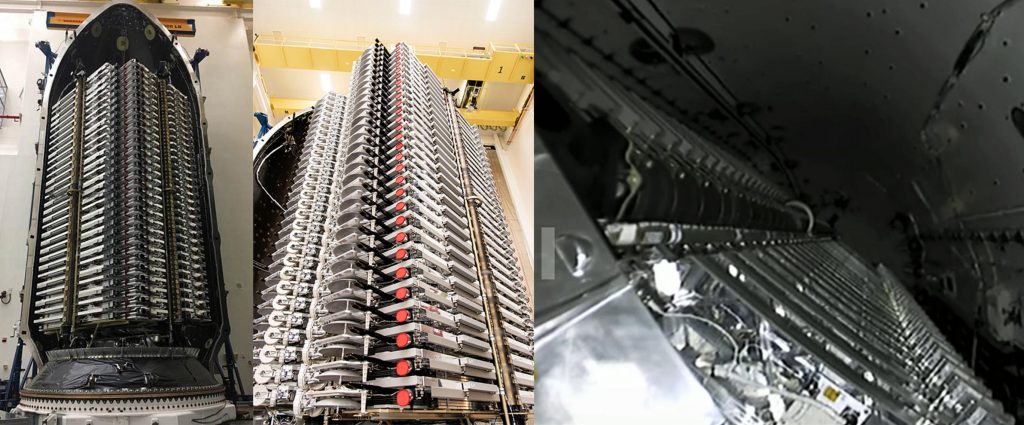
Assuming drone ship OCISLY safely returns Falcon 9 B1049 to port and including SpaceX’s successful November 2019 Starlink V1 L1 launch, the company now possesses two Falcon 9 boosters – B1048 and B1049 – that have successfully performed four separate orbital-class launches apiece. With two rockets in hand, SpaceX should be able to far more accurately determine just how well they’re standing up to the rigors of the latest reusability milestone, hopefully giving the company the data it needs to rapidly turn around one or both boosters for a fifth launch in the near future.
SpaceX has 20-24 Starlink launches planned for 2020, so the company will have a wealth of opportunities to push its fleet of reusable rockets to their limits, ranging from attempting nth booster reuses to testing and expanding the envelope of SpaceX’s nascent payload fairing reuse program.
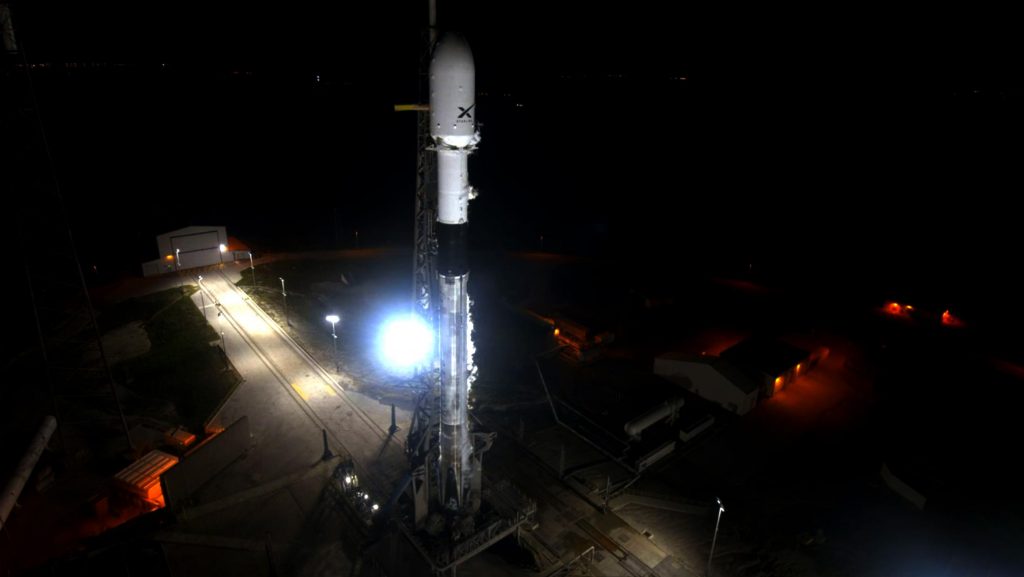
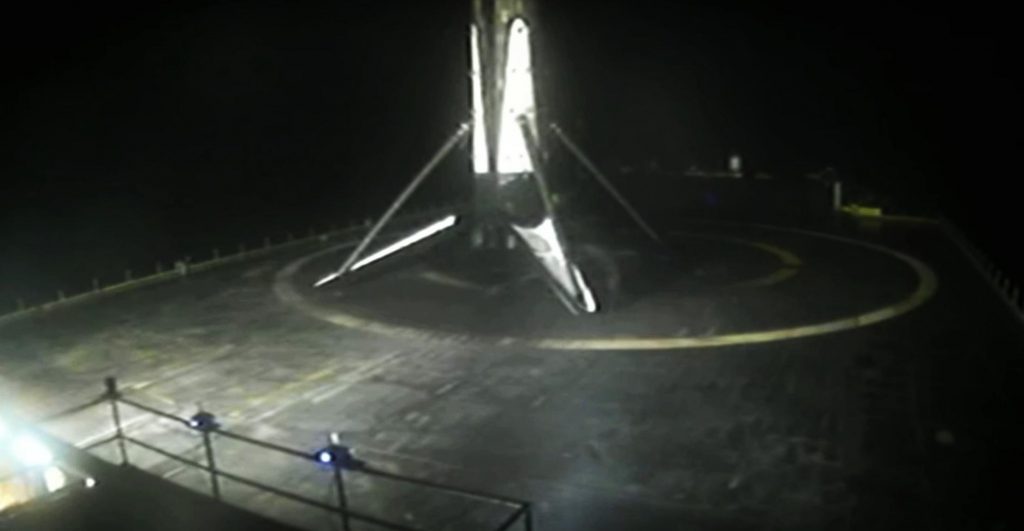
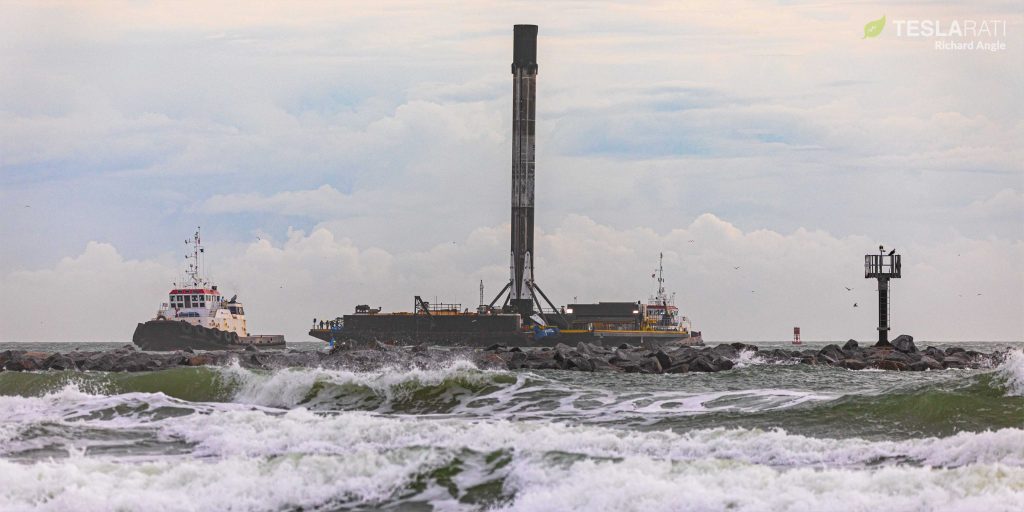
In fact, fairing recovery ship GO Ms. Tree is perhaps just a few minutes away from her third successful fairing half catch – set to occur roughly 45 minutes after Falcon 9’s 9:19 pm EST liftoff. At the same time, Falcon 9’s upper stage is coasting in low Earth orbit (LEO) and preparing to ignite one more time to circularize its orbit and send SpaceX’s third batch of 60 Starlink satellites on their way. Stay tuned for updates later tonight!
Check out Teslarati’s Marketplace! We offer Tesla accessories, including for the Tesla Cybertruck and Tesla Model 3.

Elon Musk
GM CEO Mary Barra says she told Biden to give Tesla and Musk EV credit
“He was crediting me, and I said, ‘Actually, I think a lot of that credit goes to Elon and Tesla…You know me, Andrew. I don’t want to take credit for things.”
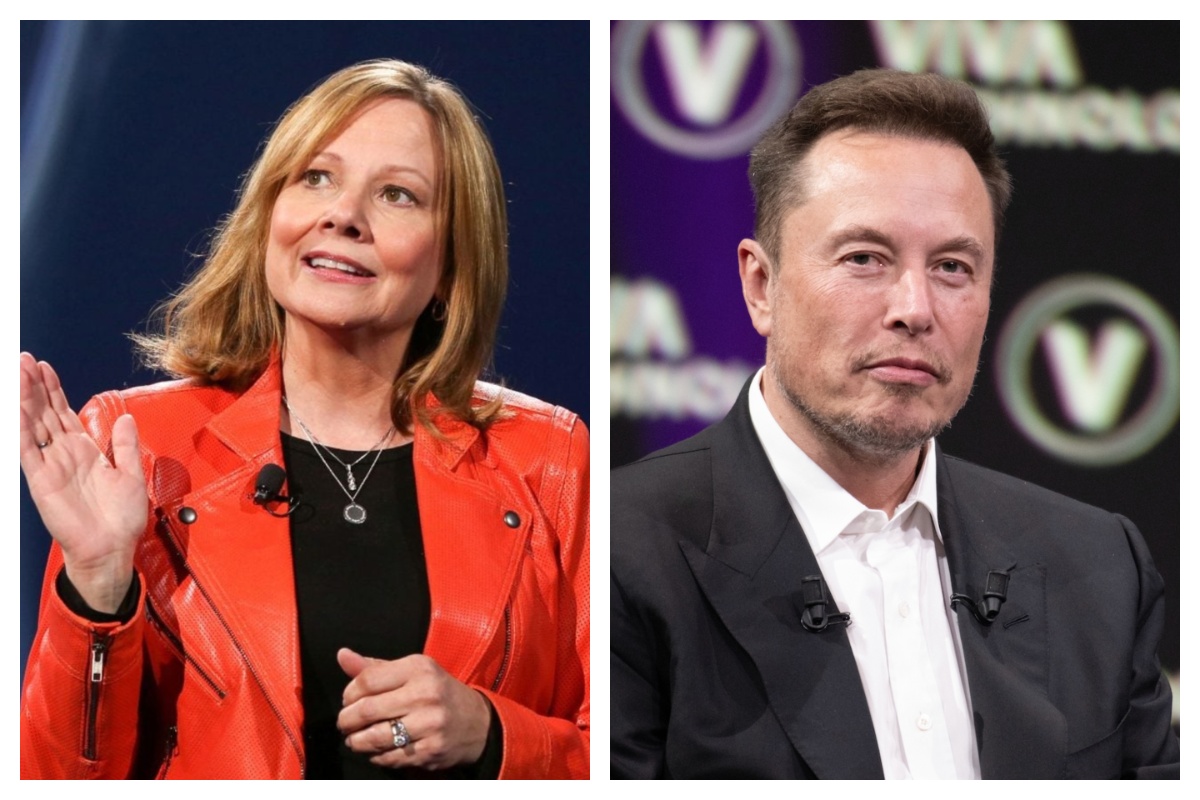
General Motors CEO Mary Barra said in a new interview on Wednesday that she told President Joe Biden to credit Tesla and its CEO, Elon Musk, for the widespread electric vehicle transition.
She said she told Biden this after the former President credited her and GM for leading EV efforts in the United States.
During an interview at the New York Times Dealbook Summit with Andrew Ross Sorkin, Barra said she told Biden that crediting her was essentially a mistake, and that Musk and Tesla should have been explicitly mentioned (via Business Insider):
“He was crediting me, and I said, ‘Actually, I think a lot of that credit goes to Elon and Tesla…You know me, Andrew. I don’t want to take credit for things.”
GM CEO Mary Barra said to Andrew Sorkin at the New York Times Dealbook Summit that she pulled President Biden aside and said Tesla CEO @elonmusk deserved the credit for EVs:
“He was crediting me, and I said, ‘Actually, I think a lot of that credit goes to Elon and Tesla,'” Barra… pic.twitter.com/OHBTG1QfbJ
— TESLARATI (@Teslarati) December 3, 2025
Back in 2021, President Biden visited GM’s “Factory Zero” plant in Detroit, which was the centerpiece of the company’s massive transition to EVs. The former President went on to discuss the EV industry, and claimed that GM and Barra were the true leaders who caused the change:
“In the auto industry, Detroit is leading the world in electric vehicles. You know how critical it is? Mary, I remember talking to you way back in January about the need for America to lead in electric vehicles. I can remember your dramatic announcement that by 2035, GM would be 100% electric. You changed the whole story, Mary. You did, Mary. You electrified the entire automotive industry. I’m serious. You led, and it matters.”
People were baffled by the President’s decision to highlight GM and Barra, and not Tesla and Musk, who truly started the transition to EVs. GM, Ford, and many other companies only followed in the footsteps of Tesla after it started to take market share from them.
Elon Musk and Tesla try to save legacy automakers from Déjà vu
Musk would eventually go on to talk about Biden’s words later on:
“They have so much power over the White House that they can exclude Tesla from an EV Summit. And, in case the first thing, in case that wasn’t enough, then you have President Biden with Mary Barra at a subsequent event, congratulating Mary for having led the EV revolution.”
In Q4 2021, which was shortly after Biden’s comments, Tesla delivered 300,000 EVs. GM delivered just 26.
News
Tesla Full Self-Driving shows confident navigation in heavy snow
So far, from what we’ve seen, snow has not been a huge issue for the most recent Full Self-Driving release. It seems to be acting confidently and handling even snow-covered roads with relative ease.
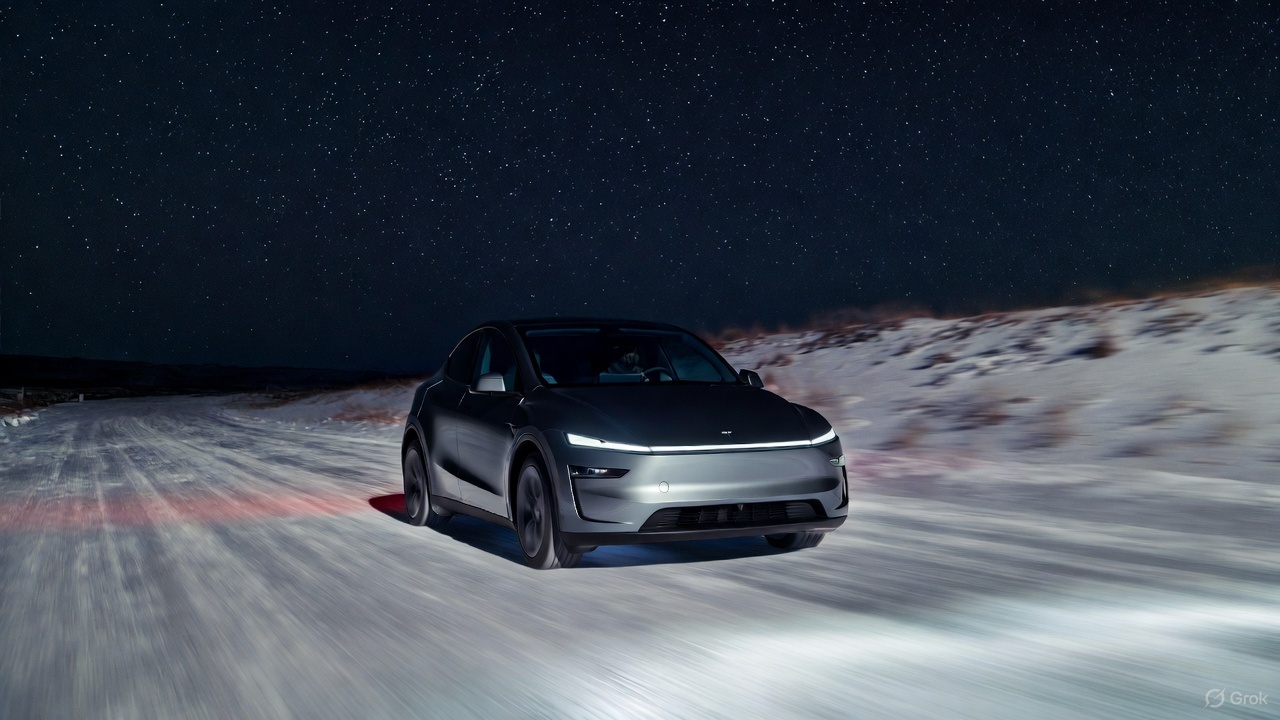
Tesla Full Self-Driving is getting its first taste of Winter weather for late 2025, as snow is starting to fall all across the United States.
The suite has been vastly improved after Tesla released v14 to many owners with capable hardware, and driving performance, along with overall behavior, has really been something to admire. This is by far the best version of FSD Tesla has ever released, and although there are a handful of regressions with each subsequent release, they are usually cleared up within a week or two.
Tesla is releasing a modified version of FSD v14 for Hardware 3 owners: here’s when
However, adverse weather conditions are something that Tesla will have to confront, as heavy rain, snow, and other interesting situations are bound to occur. In order for the vehicles to be fully autonomous, they will have to go through these scenarios safely and accurately.
One big issue I’ve had, especially in heavy rain, is that the camera vision might be obstructed, which will display messages that certain features’ performance might be degraded.
So far, from what we’ve seen, snow has not been a huge issue for the most recent Full Self-Driving release. It seems to be acting confidently and handling even snow-covered roads with relative ease:
FSD 14.1.4 snow storm Ontario Canada pic.twitter.com/jwK1dLYT0w
— Everything AI (@mrteslaspace) November 17, 2025
I found the steepest, unplowed hill in my area and tested the following:
• FSD 14.2.1 on summer tires
• FSD 14.2.1 on winter tires
• Manual drivingBut I think the most impressive part was how FSD went DOWN the hill. FSD in the snow is sublime $TSLA pic.twitter.com/YMcN7Br3PU
— Dillon Loomis (@DillonLoomis) December 2, 2025
Well.. I couldn’t let the boys have all the fun!
Threw the GoPro up and decided to FSD v14.2.1 in the snow. Roads were not compacted like the other day, a little slippery, but overall doable at lower speeds. Enjoy the video and holiday music 🎶
Liked:
Took turns super slow… pic.twitter.com/rIAIeh3Zu3— 🦋Diana🦋 (@99_Colorado) December 3, 2025
Moving into the winter months, it will be very interesting to see how FSD handles even more concerning conditions, especially with black ice, freezing rain and snow mix, and other things that happen during colder conditions.
We are excited to test it ourselves, but I am waiting for heavy snowfall to make it to Pennsylvania so I can truly push it to the limit.
News
Tesla hosts Rome Mayor for first Italian FSD Supervised road demo
The event marked the first time an Italian mayor tested the advanced driver-assistance system in person in Rome’s urban streets.
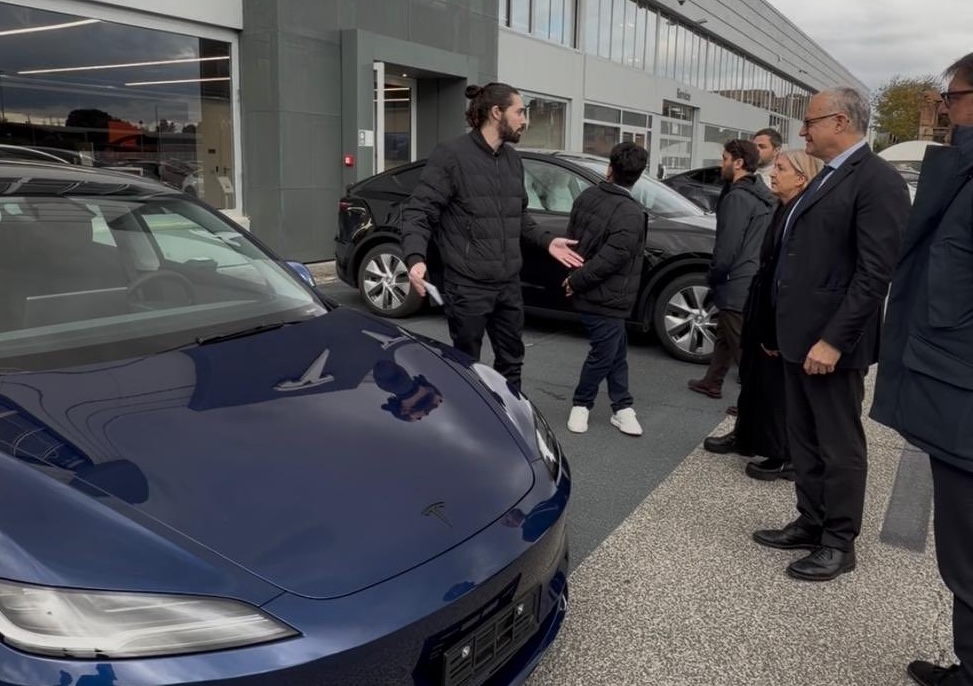
Tesla definitely seems to be actively engaging European officials on FSD’s capabilities, with the company hosting Rome Mayor Roberto Gualtieri and Mobility Assessor Eugenio Patanè for a hands-on road demonstration.
The event marked the first time an Italian mayor tested the advanced driver-assistance system in person in Rome’s urban streets. This comes amid Tesla’s push for FSD’s EU regulatory approvals in the coming year.
Rome officials experience FSD Supervised
Tesla conducted the demo using a Model 3 equipped with Full Self-Driving (Supervised), tackling typical Roman traffic including complex intersections, roundabouts, pedestrian crossings and mixed users like cars, bikes and scooters.
The system showcased AI-based assisted driving, prioritizing safety while maintaining flow. FSD also handled overtakes and lane decisions, though with constant driver supervision.
Investor Andrea Stroppa detailed the event on X, noting the system’s potential to reduce severe collision risks by up to seven times compared to traditional driving, based on Tesla’s data from billions of global fleet miles. The session highlighted FSD’s role as an assistance tool in its Supervised form, not a replacement, with the driver fully responsible at all times.
Path to European rollout
Tesla has logged over 1 million kilometers of testing across 17 European countries, including Italy, to refine FSD for local conditions. The fact that Rome officials personally tested FSD Supervised bodes well for the program’s approval, as it suggests that key individuals are closely watching Tesla’s efforts and innovations.
Assessor Patanè also highlighted the administration’s interest in technologies that boost road safety and urban travel quality, viewing them as aids for both private and public transport while respecting rules.
Replies on X urged involving Italy’s Transport Ministry to speed approvals, with one user noting, “Great idea to involve the mayor! It would be necessary to involve components of the Ministry of Transport and the government as soon as possible: it’s they who can accelerate the approval of FSD in Italy.”








